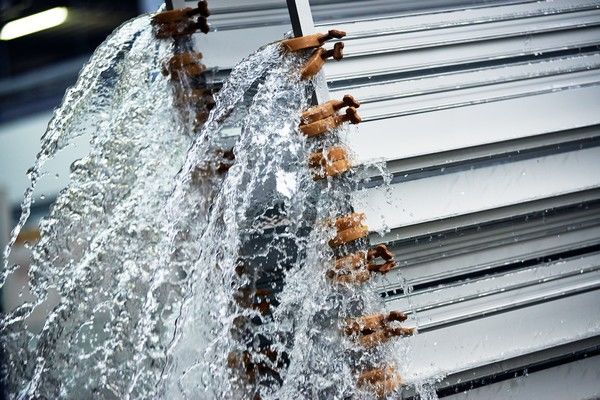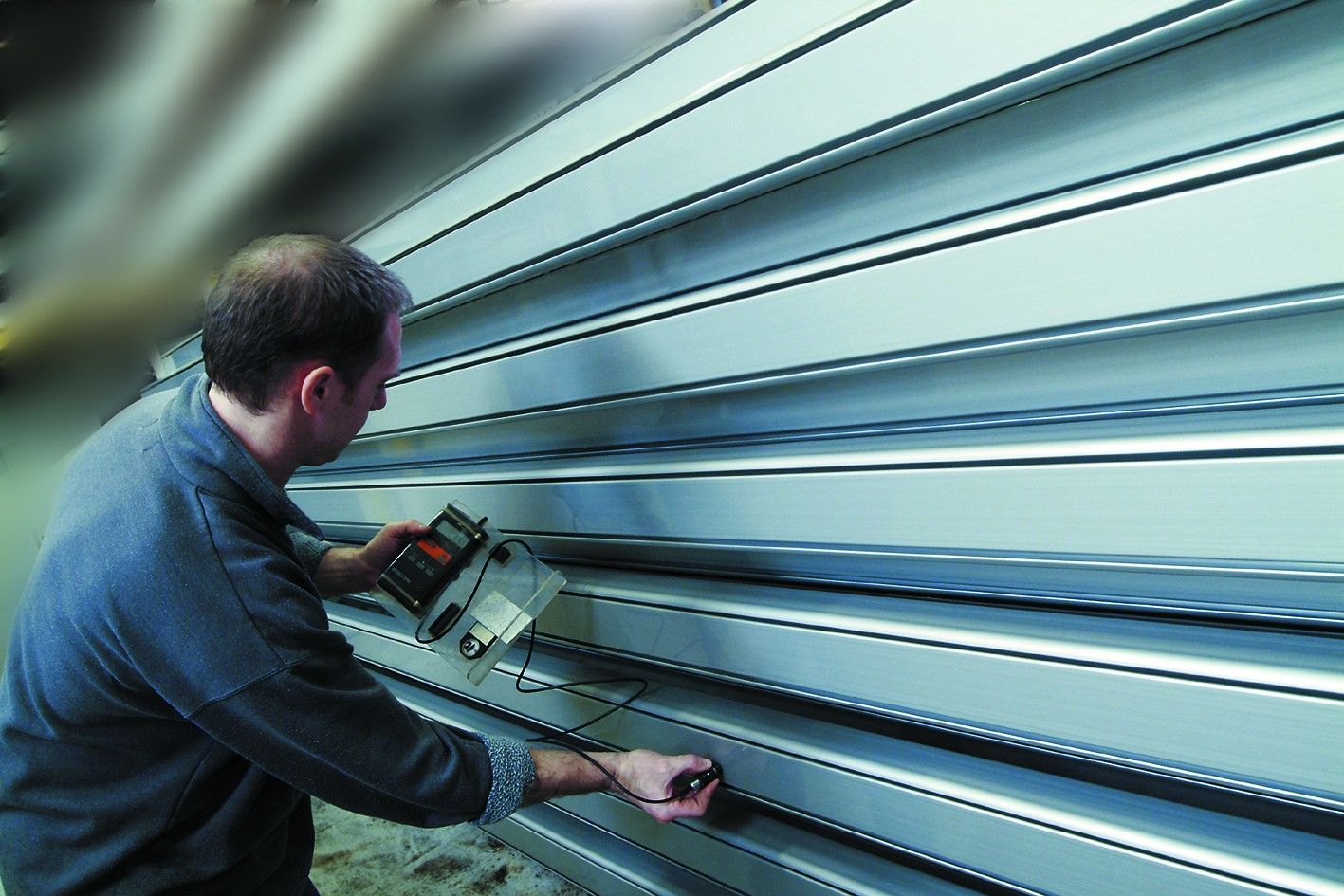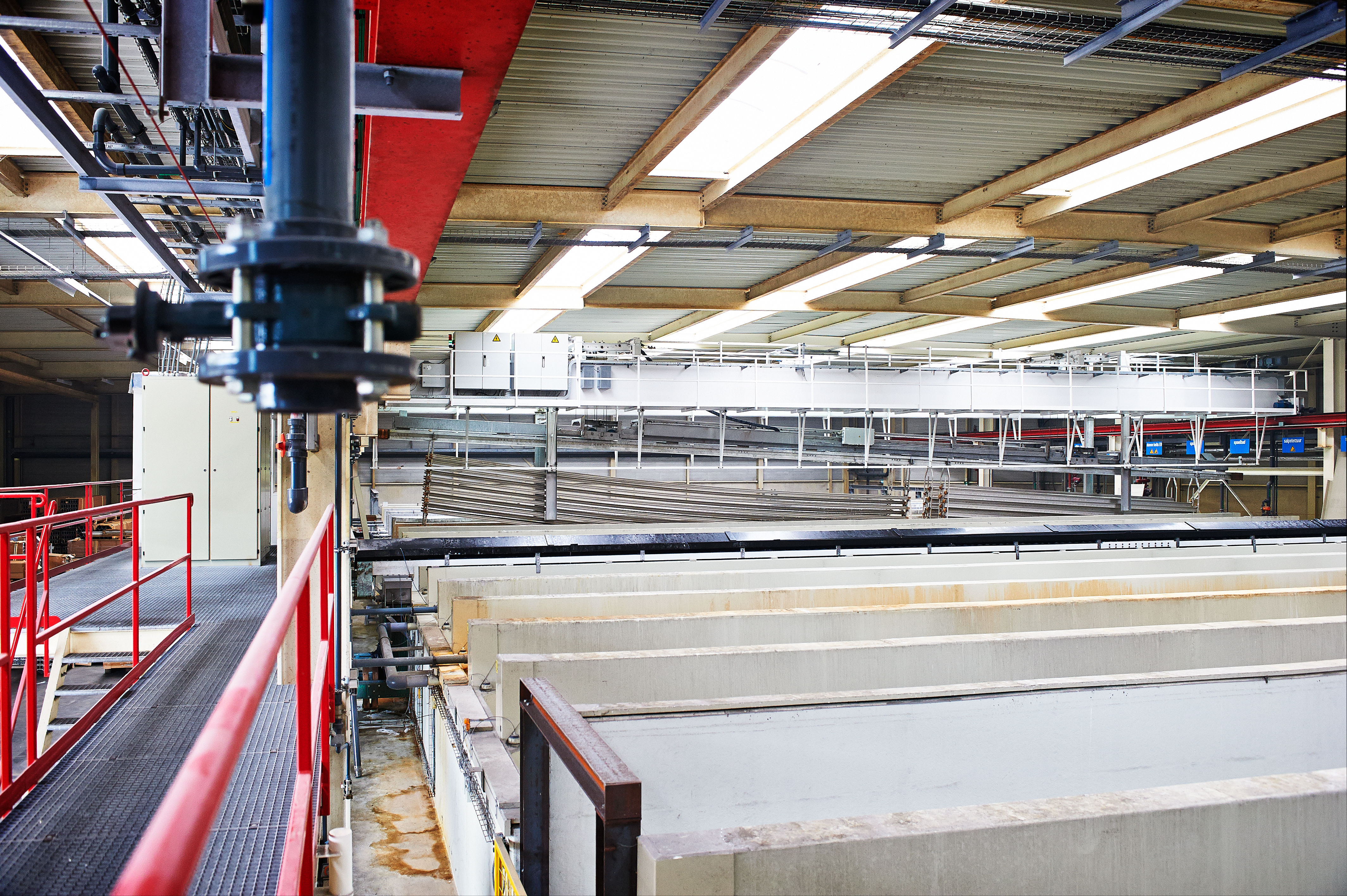Anodising
What is anodising?
As opposed to other surface treatments, anodising does not apply a layer to the aluminium, but instead a layer is created within the aluminium itself. First, an oxidation layer is formed using an electro-chemical process in a bath containing diluted sulphuric acid. The aluminium surface is converted into a layer of aluminium oxide with a thickness of 5 to 25 microns (one micron is one thousandth of a millimetre). An advantage of anodisation over a varnish finish is that it retains the beautiful metal-look of the aluminium.
Why anodise?
The main purpose of anodising is to protect the aluminium against corrosion. In addition, anodisation with a specific pre-treatment or colouring offers the possibility of embellishing the aluminium.


Layer Thickness
Alucol can anodise in various layer thicknesses.We distinguish between 5, 10, 15, 20 and 25 microns. For indoor applications, we recommend 5-10 microns. For general outdoor applications, the recommendation is 15-20 microns and for outdoor applications in a more aggressive environment 25 microns (e.g. at the coastline or railway tracks). Whereby the layer thickness also determines the degree of reflection of the final gloss finish.
Bath Sizes
The bath size determines the maximum product dimensions. Alucol has anodizing baths for the following maximum dimensions:
- Natural anodizing (unique in the world): 22,000 x 1,200 x 2,000 mm (L x W x D)
- Color anodizing: 7,500 x 400/1000 x 1,700 mm (L x W x D)
We are happy to advise you on the possibilities for anodizing your specific product.


